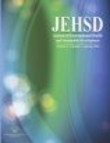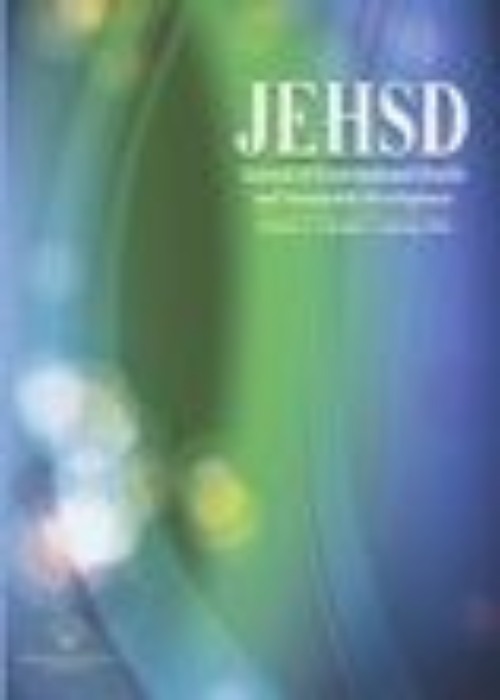فهرست مطالب

Journal of Environmental Health and Sustainable Development
Volume:8 Issue: 3, Sep 2023
- تاریخ انتشار: 1402/06/10
- تعداد عناوین: 8
-
-
Pages 2022-2023
-
Pages 2024-2038Introduction
The COVID-19 epidemic has polluted millions of people and has caused millions of deaths worldwide. Therefore, this study aims to review the effects of COVID-19 on global air pollution.
Materials and MethodsIn this narrative review, articles related to the objectives of the study were selected in reliable scientific databases such as Web of Science, Ovid, Google Scholar, PubMed, and Scopus. A total of 294 browsing sources and ultimately 90 sources were selected.
ResultsIn the COVID-19 pandemic, NO2 dropped from 53 to 11% in most countries, and PM2.5 and PM10 from 91 to 6% in some countries. CO dropped from 92 to 5% and SO2 had a decreasing trend from 77 to 7% in most countries, except for the largest cities in Britain, Poland, Taiwan, and Iran. Unlike other pollutants, O3 in most countries increased from 0.3 to 63%, but O3 decreased in some countries.
ConclusionIn the lockdown period, the reduction of most air pollutants except O3 was observed in many countries. But after restarting, polluting activities have incresed again. Therefore, the rules implemented during lockdown time can be introduced as an appropriate option in emergencies to reduce air pollution.
Keywords: Air Pollution, COVID-19, Pneumonia, Epidemic -
Pages 2039-2049Introduction
Fungal aerosols from landfill sites can play a fundamental role in environmental pollution and health. The present study aimed to assess the dispersion of fungal aerosols from municipal solid waste disposal site.
Materials and MethodsIn this cross-sectional study, the concentration of fungal aerosols was determined in four geographical directions at distances of 250, 500, 750, and 1000 m around landfill site. Relative humidity and temperature were also measured. Moreover the concentration and type of the fungal taxa isolated from landfill site under different environmental and metrological conditions were evaluated.
ResultsThe results showed that the maximum and minimum concentrations of fungal aerosol in the landfill site were 256.18 ± 59.7 CFU/m3 and 76.56 ± 23.2 CFU/m3, respectively. The most frequent fungi detected from municipal landfill site included Penicillium (43.67%), Cladosporium (33.54%), Yeast (7.60%), Aspergillus (5.91%), Curvularia (3.62%), Chrysosporium (1.57%), Alternaria (1.54%), Scopulariopsis (0.84%), and Ulocladium (0.60%) taxa. The maximum identified fungal aerosol concentration in the area around the solid waste landfill was 350 CFU/m3. Furthermore, the concentration of fungal aerosols in the environment was significantly related to relative humidity, wind direction, and temperature in spring and winter (P < 0.05).
ConclusionMunicipal solid waste disposal site can be a potential source for fungal aerosol dispersion. Moreover, fungal aerosols concentration is correlated with wind direction and speed, relative humidity, and temperature.
Keywords: Fungi, Aerosols, Solid Waste, Wind, Humidity, Karaj City -
Pages 2050-2061Introduction
The present study examines the association between ambient air pollution and harmful consequences at birth in Yazd, Iran during 2017-2020.
Materials and MethodsThis time series study by the autoregressive (AR) and moving average (MA) or ARMA model was conducted in Yazd, Iran. Birth information including fetal sex, birth weight, birth height, and head circumference as well as preterm birth (PTB) and abortion was collected from mother and birth cohort databases. Data on air pollutants concentrations in the corresponding gestational period were obtained from fixed air monitors of Yazd Municipal Environmental Monitoring Center. The time series model statistical test was performed to find the relation between ambient air pollution and harmful consequences at birth.
Results2131 singleton live births were monitored for 3 years. In ARMA models, the ratio of girl births to total births (Coef: 7.943, 95% CI: 2.797, 13.089), preterm delivery (Coef: 2.915, 95% CI: 0.224, 5.606), and spontaneous abortion (Coef: 44.751, 95% CI: 26.872, 62.629) was associated with NO2 exposure. Distributed mismatch models also suggested associations between the Air Quality Index (AQI) in pregnant women with a sex-premature birth relationship (Coef: 0.001, 95% CI: 0.000, 0.001).
ConclusionExposure to air pollution, even at low levels, may increase the risk of sex ratio in singletons, premature birth, and spontaneous abortion. However, the results of the present study could not definitively show the relationship between air quality and other birth problems. More research studies are required to investigate the present findings.
Keywords: Air Pollution, Health Impact Assessment, Pregnancy Outcomes, Time Series, Cohort Studies -
Pages 2062-2069Introduction
Green Airport is an airport development concept designed to be healthy. Excess levels of carbon monoxide (CO) and carbon dioxide (CO2) in the room can cause discomfort in the form of headache, nausea, vomiting, vertigo, and feeling confused and weak. This study aimed to determine the implementation of CO and CO2 control in rooms to achieve a green airport at Banyuwangi Airport.
Materials and MethodsIn this descriptive study, the obtained data were compared with related regulations. The physical and chemical quality of indoor air was measured at 85 points in three main rooms at risk using CO and CO2 detectors. Control was done through observing and measuring ventilation and detection systems in the entire occupied space.
ResultsThe measurement results of CO and CO2 levels have met the specified threshold value below 29 ppm for CO and 5000 ppm for CO2. Physical quality measurements have not met the requirements for indoor temperature above 27.1°C and humidity above 60%. The assessment of ventilation aspects in the domestic terminal building of Banyuwangi Airport was achieved based on SNI 03-6572-2001 received 29 rooms or 74.3% of the rooms, 10 rooms that do not fit the ventilation system are toilet.
ConclusionThe results of the assessment conducted show that there are still aspects that are not in accordance with the provisions of green buildings.
Keywords: Air Pollution, Carbon Monoxide, Ventilation, Sustainable Development -
Pages 2070-2077Introduction
The quality of drinking water is of vital importance in breeding chickens. High levels of bacteria, minerals, or other contaminants in the water of poultry farms can have adverse effects on the natural physiology of chickens. Therefore, this study aims to investigate the physical, chemical, and microbial quality of water used in poultry farms in Ardestan, Iran.
Materials and MethodsThis descriptive cross-sectional study was conducted on water sources (Wells and Qanats) of 35 poultry farms in Ardestan during the summer of 2021.Water samples were randomly taken and send to laboratory for analysis of physical, chemical, and microbial parameters according to Standard Methods. SPSS 16 software was applied for statistical analysis.
ResultsWith the exception of sodium, sulfates, and total hardness (TH), all other parameters fell within acceptable standard limits. Some water samples showed elevated levels of total coliforms exceeding the prescribed limits. Furthermore, the mean concentrations of heavy metals, including iron, lead, chromium, and cadmium remained within acceptable levels in all samples.
ConclusionAlthough the majority of water quality parameters in the studied poultry farms were compatible with standards limits, testing and monitoring the chemical and microbial quality of water in poultry farms is recommended on a regular basis.
Keywords: Poultry, Water Pollution, Water Quality, Ardestan City -
Pages 2078-2095Introduction
The study objective is to remove heavy metals from an aqueous solution using recycled bentonite clay waste (RBCW) as a low-cost and green adsorbent in a continuous system. The produced RBCW results from thermal remediating of the hazardous industrial bentonite clay waste that is a by-product of used engine oil recycling plants.
Materials and MethodsThe doses of the RBCW adsorbent were (1.0, 1.5, and 2.0) g mixed with (30, 40, and 50) g of the crystalline sand to produce bed depth columns of (22, 30, and 38 cm), respectively. The influent concentrations of all adsorbates were (20, 50, and 100) ppm, and the flow rates of the continuous system were (0.5, 1.0, and 2.0) mL/min.
ResultsThe BET, XRF, and SEM tests and the experimental data approved that RBCW is active material for heavy metals adsorption. The adsorption capacity and breakthrough time of Pb, Cd, Cr, Zn, and Ni for dominant parameters (flow rate of 1.0 mL/min, adsorbent mass of 1.0 g, and influent concentration of heavy metals of 20 ppm) were 70.36, 36.05, 27.55, 21.67, and 18.63 mg/g, and 35, 19.73, 11.38, 6.25, and 8.13 hr, respectively.
ConclusionThe RBCW adsorbent has more than one advantage in industrial and environmental issues. The (R2) values for Thomas, Yoon-Nelson, and BDST models were higher than 0.9. Moreover, the breakthrough curves of experimental data were more fitted with the Yoon-Nelson model due to the high value of R2 and low values of Chi-square, absolute average deviation, and standard deviation.
Keywords: Adsorption, Sand, Metals, Heavy, Water, Permeability


